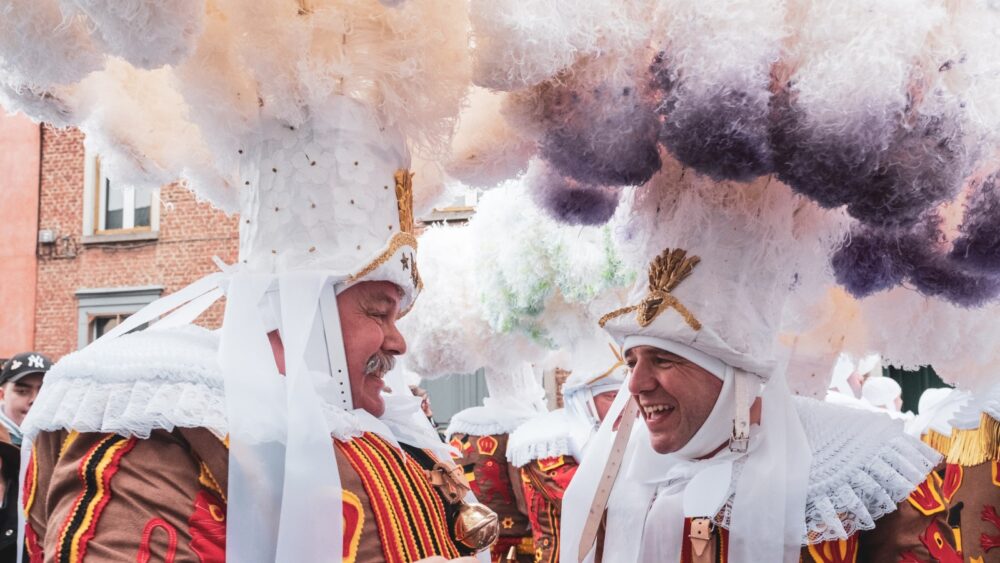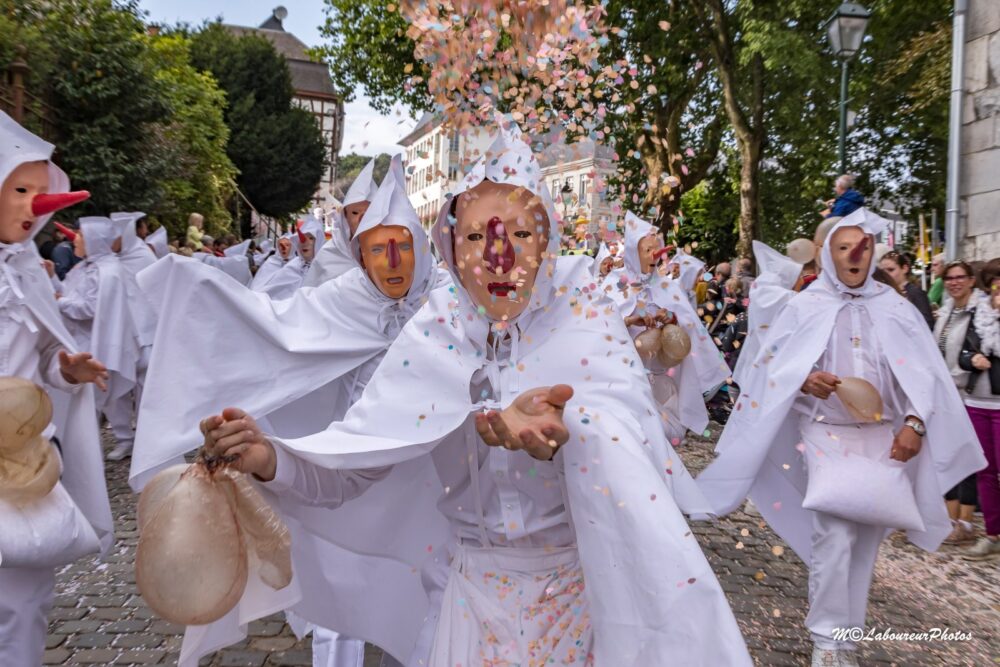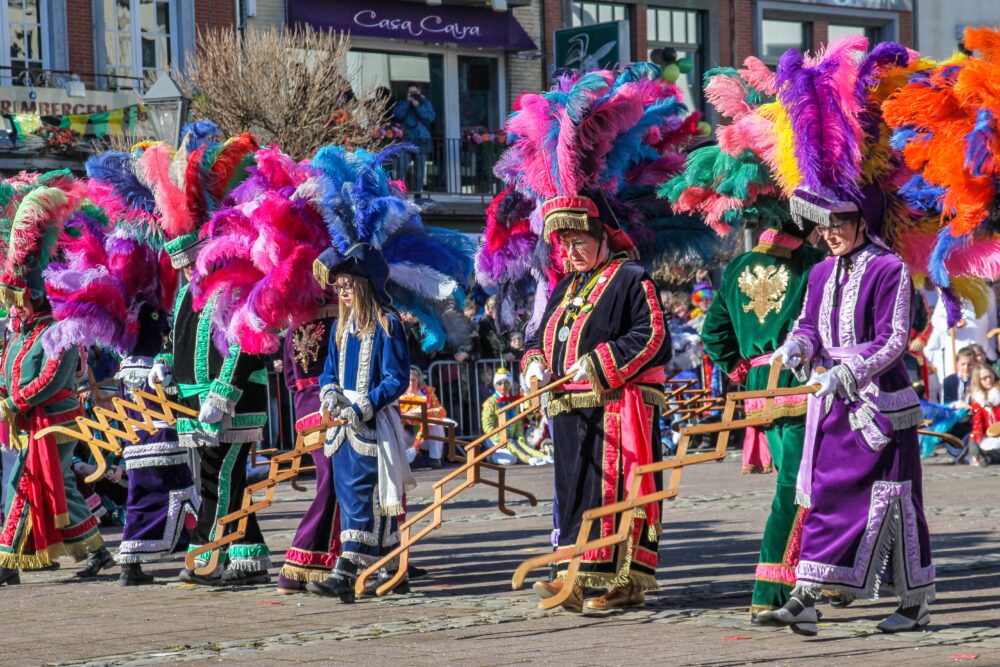Weird and wonderful traditions
In festival season, it’s hard to ignore Wallonia, in southern Belgium. Known for its quirky ways, you’d be hard pressed to beat the weird and wonderful carnivals and festivals which perfectly illustrate Walloons’ passion for local history and folklore — and the immense effort they put into their celebrations.
Wallonia’s language and culture have been influenced over the centuries by invaders and conquerors. Included in this are folk traditions adopted from other lands that are now deeply ingrained in Walloon traditions. Winter’s end marks the start of festival time with a string of carnivals, events and ancient traditions that bring the whole region alive.
Kicking off the season on Shrove Tuesday in February is the Binche Carnival. Some say Binche gave English the word “binge”, and that about sums it up! Indulgence is the very essence of Wallonia’s best-known festival — so ancient and steeped in weird and wonderful tradition that UNESCO has deemed it a Masterpiece of the Oral and Intangible Heritage of Humanity. Picture an unearthly brotherhood of one thousand men in strange masks and headdresses adorned with large ostrich feathers, waving sticks to ward off evil spirits and throwing oranges as metaphorical blessings, and you’ll start to get the picture. So important has the Binche festival become that it has inspired a permanent museum here, too. The International Carnival and Mask Museum retraces the history of similar festivals and carnivals across the world as well as those held here in Wallonia.

In Wallonia, no two festivals are the same. Some are called Laetare, mid-lent carnivals. In March at Stavelot, you’ll meet the equally strange Blancs Moussis in completely white costumes and Pinocchio-like masks. These ethereal characters love to throw confetti and play amusing tricks. Dangling dried herrings in people’s hair and dancing with dried pigs’ bladders are just a few of the wonderful high jinx taking place. Rest assured, every detail is highly significant and symbolic of history and culture.

Cwarmê carnivals are a little different. Festivities stretch over four days with everyone speaking Walloon for the occasion. The Malmedy version takes place in June and is well ingrained in the Walloon tradition with around 2,500 costumed revelers wearing masks depicting the fifteen key characters. An archival document dating to 1459 suggests that the Cwarmê (Malmedian Carnival) was celebrated as early as that date and possibly even much earlier. The Haguètes (masked figures in red robes and plumed hats) wander through the city, grabbing onlookers with their hape-tchâr (a type of wooden tongs) until they kneel and ask for forgiveness. All in good spirits, of course!
There’s no doubt that Wallonia is the capital of Carnival. It’s a land where villages with names such as Silly, Wierde, Bra, Ham and Dance are a matter of course; where surrealism is not just an art style but a way of being. You know that there will never be a dull moment!
